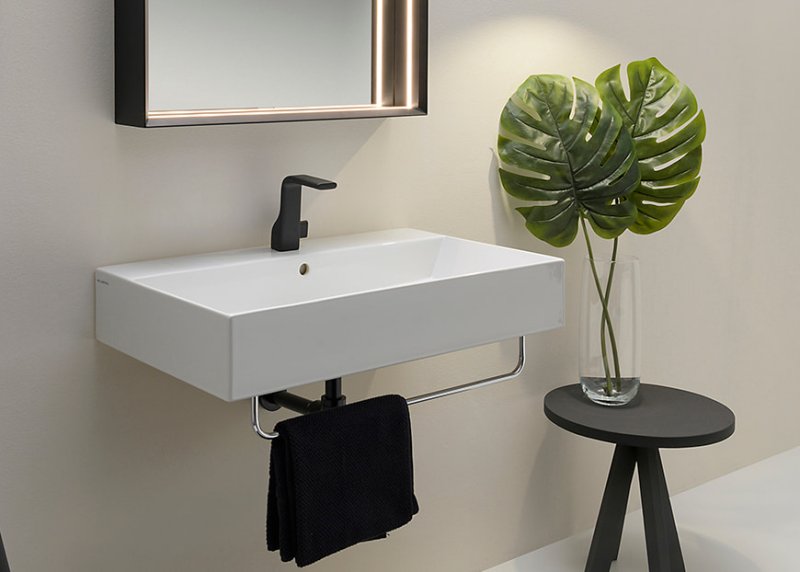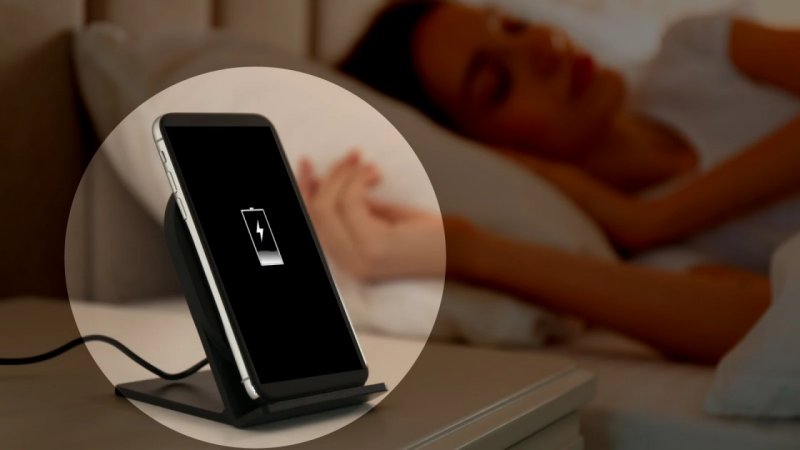
The bathroom, a sanctuary for personal hygiene and rejuvenation, ironically often becomes a hotspot for toxic chemicals. Traditional bathroom cleaners, laden with harsh bleaches, ammonia, phthalates, and synthetic fragrances, promise sparkling surfaces but deliver a hefty dose of environmental pollution and potential health hazards. These potent cocktails contribute to poor indoor air quality, irritate skin and respiratory systems, and eventually wash down our drains, impacting aquatic ecosystems. Moreover, the endless cycle of single-use plastic bottles adds to our ever-growing landfill crisis.
But what if you could achieve a pristine, germ-free bathroom without sacrificing your health or the planet's well-being?
The good news is, you absolutely can. Embracing eco-friendly cleaning practices is not just a trend; it's a responsible shift towards a healthier home and a more sustainable future. It empowers you to tackle grime, combat mold, and banish odors using natural, biodegradable ingredients and mindful methods. Prepare to transform your cleaning routine as we explore six effective ways to clean your bathroom the eco-friendly way, proving that a sparkling clean can truly be a green clean.
1. Embrace the Power of DIY Cleaning Solutions
Forget the brightly colored bottles and misleading promises; your pantry holds a formidable arsenal of eco-friendly cleaning agents that are both effective and incredibly affordable. Harnessing the power of everyday ingredients like vinegar, baking soda, and lemon juice allows you to create potent, non-toxic solutions tailored to various bathroom challenges.
White Vinegar: This humble kitchen staple is a true multi-tasker. Its acetic acid content makes it excellent for dissolving mineral deposits (limescale from hard water), cutting through soap scum, disinfecting surfaces, and even tackling mold and mildew. Keep a spray bottle filled with a 1:1 solution of white vinegar and water for an all-purpose cleaner. For stubborn grime or limescale on taps and showerheads, use undiluted vinegar or wrap vinegar-soaked cloths around fixtures and leave for an hour before scrubbing. While its scent can be strong initially, it dissipates quickly as it dries.
Baking Soda (Sodium Bicarbonate): A mild abrasive and natural deodorizer, baking soda is your go-to for scrubbing without scratching. Create a paste with a little water to tackle grout lines, sink basins, and bathtub rings. Sprinkle it directly onto damp surfaces, let it sit for a few minutes, then scrub with a brush or sponge. For an extra boost against tough stains, sprinkle baking soda, then spray with vinegar (the fizzing action helps lift dirt). Baking soda also excels at absorbing lingering odors from drains or damp areas.
Lemon Juice: The citric acid in lemon juice is a natural bleach, degreaser, and deodorizer. Use it to brighten porcelain, remove rust stains, and add a fresh scent. A cut lemon dipped in baking soda makes an excellent scrubber for chrome fixtures or sinks, leaving them shining and fresh.
Essential Oils: While not cleaners themselves, a few drops of essential oils like tea tree (antibacterial, antifungal), lavender (antibacterial, calming scent), or lemon (fresh scent, degreasing) can be added to your DIY solutions for an extra antimicrobial kick and a pleasant, natural fragrance, replacing harsh synthetic perfumes.
By creating your own cleaners, you eliminate harmful chemicals, reduce plastic waste, and save money, all while achieving remarkable results.
2. Choose Reusable Tools and Materials
The cleaning tools we use are just as important as the solutions. Traditional methods often rely on disposable products like paper towels, single-use wipes, and synthetic sponges that contribute significantly to landfill waste. Shifting to reusable alternatives is a simple yet impactful eco-friendly switch.
Microfiber Cloths: These cloths are a game-changer. Their unique fiber structure allows them to trap dirt, dust, and grime effectively, often with just water. They are highly absorbent, durable, and can be washed and reused hundreds of times. Dedicate specific colors for different areas (e.g., blue for glass, green for general surfaces, yellow for toilets) to prevent cross-contamination.
Natural Fiber Brushes and Scrubbers: Replace plastic brushes with those made from bamboo, wood, or recycled plastic bristles. Opt for loofah or cellulose sponges over synthetic ones. These natural alternatives are durable, often more effective, and biodegradable at the end of their life cycle. A dedicated toilet brush with natural bristles, a sturdy scrubbing brush for tough spots, and an old toothbrush for intricate areas (like around taps or grout lines) are indispensable.
Squeegees: A simple squeegee used after every shower can dramatically reduce soap scum and hard water stains on glass shower doors, minimizing the need for harsh chemical cleaners later.
Making this switch means less waste heading to landfills, a reduction in the consumption of virgin resources, and often a better clean as reusable tools are designed for durability and efficiency.
3. Opt for Concentrates and Refills
One of the biggest culprits in cleaning product waste is the single-use plastic bottle. Even if recycled, the energy and resources required for their production and processing are substantial. A truly eco-friendly approach involves minimizing packaging waste from the outset.
Refillable Bottles: Invest in durable, high-quality spray bottles (glass or BPA-free plastic) that you can endlessly refill. When you purchase cleaning products, look for brands offering concentrates, which require you to add water at home, or large bulk containers designed for refilling smaller bottles.
Concentrated Formulas: Many eco-friendly brands now offer concentrated cleaning solutions in smaller, more sustainable packaging, or even as dissolvable tablets. These formats significantly reduce plastic waste and lighten the carbon footprint associated with shipping water. Imagine a tiny tablet that turns into a full bottle of bathroom cleaner!
Local Refill Stations: A growing number of zero-waste stores and co-ops offer cleaning product refill stations. Bring your empty bottles, pay by weight or volume, and refill your favorite eco-friendly cleaners. This system nearly eliminates single-use plastic and supports local businesses committed to sustainability.
By choosing concentrates and refills, you actively participate in a circular economy, drastically reducing plastic consumption and the environmental impact of manufacturing and transporting bulky liquid products. It’s a powerful statement against the linear “take-make-dispose” model.
4. Tackle Stains and Grime Promptly
The old adage "prevention is better than cure" holds immense truth in eco-friendly cleaning. Allowing grime, soap scum, and mold to build up requires more aggressive cleaning methods, often necessitating stronger (and potentially less eco-friendly) products or more intense scrubbing, which consumes more energy and water.
Wipe Down Surfaces Regularly: After each use, a quick wipe-down of the sink and countertop can prevent toothpaste splatters and soap residue from hardening. A quick swipe of the shower walls with a cloth or squeegee after showering can prevent soap scum and mold from taking hold.
Ventilate After Showers: While this ties into another point, ensuring proper ventilation immediately after a shower helps dry surfaces quickly, preventing the moist environment that mold and mildew thrive in.
Address Spills Immediately: Don't let makeup spills or dropped hair products sit. The longer they remain, the harder they are to remove with gentle, eco-friendly methods. A quick wipe with a damp cloth is often all that's needed if addressed promptly.
Regular, Light Cleaning: Instead of a once-a-month deep clean marathon, adopt a routine of lighter, more frequent cleaning. This keeps dirt and grime from accumulating to challenging levels, meaning you can often rely solely on your DIY vinegar and baking soda solutions, reducing the need for specialized (and potentially harsher) spot treatments. This proactive approach saves time, effort, and resources in the long run.
5. Harness the Power of Ventilation and Natural Light
Beyond the cleaning products themselves, the very environment of your bathroom plays a crucial role in maintaining cleanliness and preventing issues that would otherwise demand chemical intervention. Ventilation and natural light are powerful, free, and eco-friendly allies.
Maximize Ventilation: Bathrooms are notoriously damp environments, making them prime breeding grounds for mold and mildew. Always use your exhaust fan during and for at least 30 minutes after showers and baths. If you don't have an exhaust fan, open a window to allow steam and moisture to escape. Keeping the bathroom door slightly ajar when not in use also helps with air circulation.
Allow Surfaces to Dry: After showering, spread out the shower curtain fully to help it dry faster and prevent mildew. Wipe down wet shower walls, glass, and fixtures. Damp towels should be hung to dry thoroughly outside the bathroom or placed in a laundry hamper rather than left balled up on the floor.
Embrace Natural Light: Sunlight is a natural disinfectant and mold inhibitor. If your bathroom has windows, open the blinds or curtains during the day. Allowing natural light to flood the space can help inhibit the growth of bacteria and mold, reducing the need for chemical agents to tackle these issues.
By actively managing moisture and maximizing airflow, you create an environment less conducive to mold, mildew, and stale odors, significantly reducing your reliance on chemical mold removers and artificial air fresheners. This not only makes your cleaning easier but also improves indoor air quality naturally.
6. Seek Out Certified Eco-Friendly Products (When DIY Isn't Enough)
While DIY solutions are fantastic for most cleaning tasks, there might be times when you prefer a ready-made product, or encounter a stubborn issue that requires a little more oomph. When this happens, it’s crucial to know how to identify truly eco-friendly cleaning products and avoid “greenwashing.”
Look for Certifications: The most reliable way to ensure a product is genuinely eco-friendly is to look for reputable third-party certifications. Labels like EPA Safer Choice (U.S.), Ecologo, Green Seal, or USDA Certified Biobased Product indicate that the product has met stringent environmental and health standards. These certifications ensure ingredients are safer for human health and the environment, and often address packaging, manufacturing processes, and carbon footprint.
Read Ingredient Labels: Be wary of vague terms like "natural" or "eco-friendly" without supporting details. Look for ingredients that are:
- Plant-based and biodegradable: Derived from renewable resources and break down safely in the environment.
- Phosphate-free: Phosphates contribute to harmful algal blooms in waterways.
- Phthalate-free: Often found in synthetic fragrances and linked to health concerns.
- Free of harsh chemicals: Avoid chlorine bleach, ammonia, strong acids, and petroleum-based solvents.
- Cruelty-free: Not tested on animals.
Consider Packaging: Prioritize products sold in recycled content packaging, or those that offer refill options, concentrates, or bulk sizes to minimize plastic waste.
Choosing wisely means supporting companies committed to sustainability, ensuring that even your purchased cleaners align with your eco-conscious values, providing effective cleaning without compromise to your health or the planet.
Conclusion
Transforming your bathroom cleaning routine into an eco-friendly practice is a journey of small, impactful changes. From harnessing the simple power of vinegar and baking soda to embracing reusable tools and making informed purchasing decisions, each step contributes to a healthier living space and a lighter footprint on our planet.
A sparkling clean bathroom doesn't have to come at the cost of environmental integrity or personal well-being. By integrating these six eco-friendly ways into your routine – embracing DIY solutions, opting for reusable tools, choosing concentrates, tackling grime promptly, leveraging natural ventilation, and selecting certified products – you'll discover that a truly clean home is one that nourishes both you and the Earth. Take the leap, one green cleaning choice at a time, and enjoy the refreshing satisfaction of a bathroom that's not just spotless, but also genuinely sustainable.







0 Comments
Post Comment
You will need to Login or Register to comment on this post!